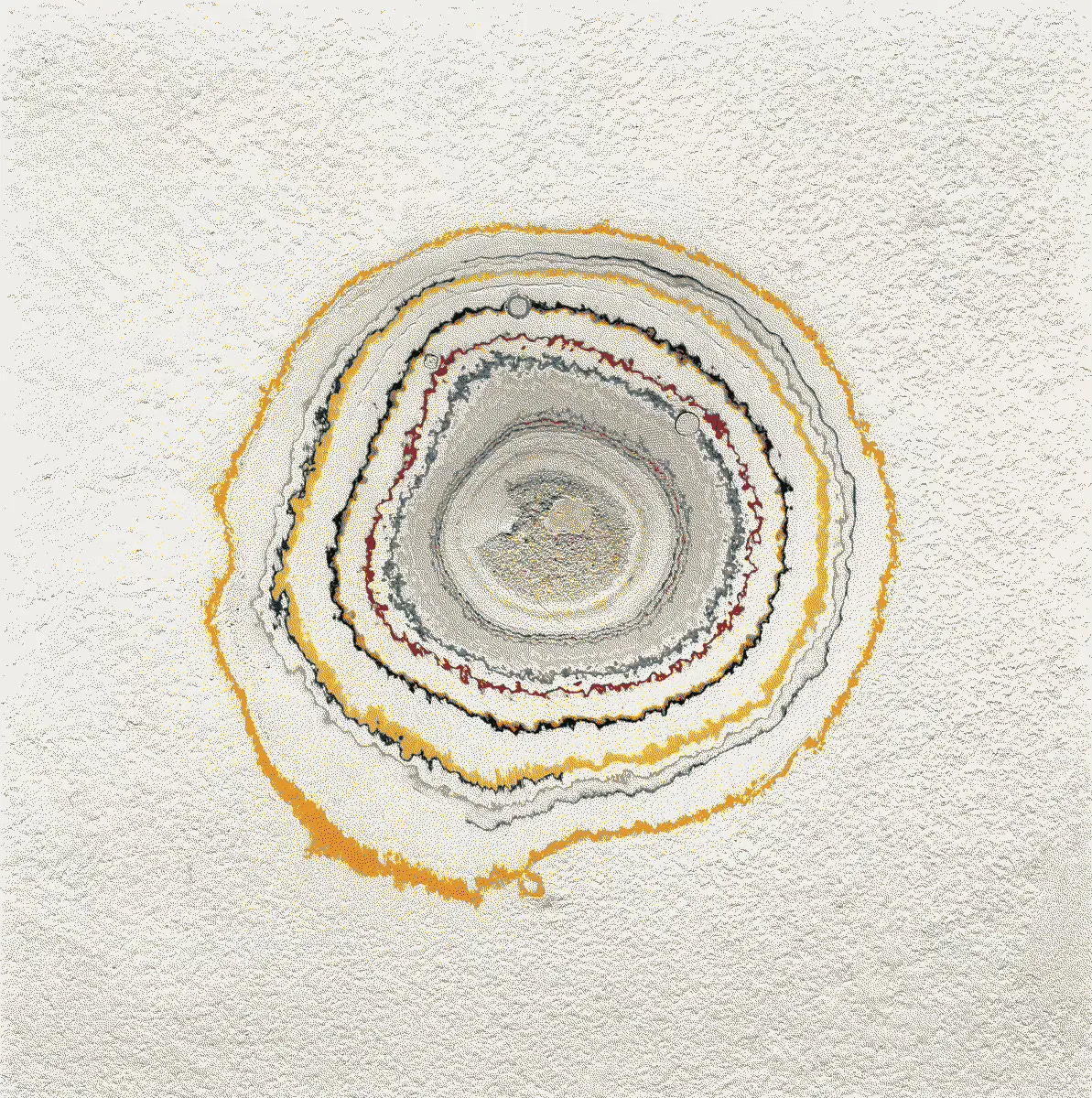“The show’s theme song is, of course, iconic, but that’s not the same thing as good”
In this edition of the Weekender: worm memory, music cues, and ranking Xi Jinping’s jokes

This week, we’re slow dancing, remembering worms, cracking jokes, and analyzing phone backgrounds.
ESSAY
Exposure
A braided essay by Alexander Sorondo, on shame, judgment, and our sense of self.
Your Phone’s Wallpaper Is Telling Your Secrets
—
in1.
I used to be quietly judgy if I noticed that the background photo, the wallpaper, on somebody’s phone was a selfie.
This went on for a few years. Especially during Covid, when I went on more dates than any point in my life.
Now I work retail and customers use Apple Pay at the register, meaning they just tap their phone on the little credit-card reader and the payment bloops out, so I see it more than ever (the selfie background) and it occurs to me now, perhaps in this humbler position, that the selfie background photo, the Me-At-My-Best wallpaper, is less a flag signaling vanity than an emotional version of that steel bar my grandmother had to install beside her toilet, to help lift herself up.
When customers use Apple Pay and I see their background photos, they’re usually photos of
the cardholder’s kids
spouse
pets.
Then selfies after that.
Women use Apple Pay far more than men, so that might be a gendered read.
I see with straight men sometimes that their background photo is a vehicle or a Punisher logo.
Hot take: This is a metric for how closely their loneliness is tilting them toward violence.
Gay men often have as their background photo some very-vintage photo (sepia, curlers) of the first woman who loved them dearly.
2.
My college roommate, senior year, was a 6’3” Russian called Nijat. His English was bubbly and fluent but had some hitches. One time we were at a bar and I thought we were friendly enough that I could casually mention that he punctuated all of his sentences with one of three phrases:
“basically speaking”
“kind of a thing”
“sort of a way.”
Instant devastation. Like Lisa dumping Ralph. His face did what a car window does when firefighters tap that spike on it. I hastened with a “no no no I’m not making fun” but it turned out his accent and his English was a really tormented inner terrain for him. I had ruined the evening.
This conversation was held at an Applebee’s in Kendall for some reason and it remains the only time I ever sat across from somebody who ordered an entree, ate the whole thing, and then ordered a second one.
The server took the order for that 2nd meal casually enough but asked if he “wanted it to go.”
Nijat scowled. Not angry, just puzzled. “Go where?”
She said, “No, like…in a doggy bag.”
He made eye contact with me for the first time in minutes, the first time since I hurt his feelings with that remark about his verbal tics, and he looked like a person who'd been cornered into one of two options: shame, or rage.
PAINTING

SCIENCE
Edible memory
Claire L. Evans reports on a strange, fascinating, and somewhat macabre scientific study of memory, featuring cannibalistic worms.
Eating the Engram
—
inPlease assume, for the sake of argument, that there is in our souls a block of wax.
So begins Plato’s treatise on memory, the “mother of Muses.” To remember, Plato said, we hold our thoughts to our internal wax, imprinting them, as with a seal ring. Over time, the wax softens, our memories fade; what we don’t imprint, we forget.
This is an archaic model for memory, but not an entirely inaccurate one. A wax imprint is a form of memory, in a literal sense—just as a book is, an etching on a wall, or a footprint left behind on some archaic plain. “Any physical medium that allows information to persist over time carries information about the past,” says Sam Gershman, a cognitive scientist at Harvard. “That perspective helps us take a step back away from some of the brain-centric ideas about what memory is.”
I spoke to Gershman recently for a piece I was writing for Quanta about brainless forms of memory. His lab is currently studying the ciliate Stentor coeruleus, a primitive unicellular organism that nonetheless appears capable of remembering its past. Although microscopic pond creatures might seem beyond the ken of cognitive science, Stentor is remarkably like a neuron, with similar excitable membranes and action potentials. If scientists like Gershman can uncover how ciliates remember, it may help us to trace what ancient forms of memory still linger in our own cells.
Gershman’s work is so new that it’s still unpublished, but his questions are old ones. What is memory? Where does it live? We still don’t have good answers. Plato had his wax impressions, to which the German zoologist Richard Semon later gave the name engrams. Discovering the nature and location of engrams in the brain was, Semon presumed, a “hopeless undertaking” for the science of his day. It stymies us still.
In the 1960s, an eccentric behavioral psychologist named James V. McConnell took up Semon’s gambit with a series of studies on planarian flatworms. Flatworms are a particularly useful organism for studying memory: they’re one of the simplest creatures to possess a brain and a nervous system with the same bilateral symmetry as ours. They also have an uncanny ability to regenerate. If a planarian worm is chopped in half, both halves will regrow into a new worm—tail from head, and head from tail.
McConnell devised a series of experiments to test associative learning in planarians, repeatedly shocking them while exposing them to a bright light until they associated the light with the shock—think Pavlov’s worm. Once confident that the worms remembered this training, McConnell beheaded them all. As he expected, the new worms that grew from the severed heads remembered the shocks and reacted in kind.
What McConnell didn’t expect was that the worms that grew back from the headless tails retained their training, too. Their brains had been entirely lopped off, but they still anticipated the dreaded shock that accompanied McConnell’s bright light. This meant that whatever form the worms’ memories took, they weren’t the exclusive purview of their brains. They lurked somewhere—or maybe everywhere—else.
McConnell took this work a step further by grinding up his trained worms and feeding them to their naive brethren; the cannibal worms picked up the light response right away, as though they were remembering, rather than learning, what to do. Could the worms have eaten the engram? “In the jargon of computer engineering, information is always ‘fed’ into a computer,” Arthur Koestler later wrote, in a survey of McConnell’s work. “Here the metaphor became flesh.”
PHOTOGRAPHY

SIZE MATTERS
POLITICAL HUMOR
Funny guy
A rating of Xi Jinping’s jokes, as reported by Communist-Party-Members.com.
Is Xi Jinping Funny?
—
in RambleA barbershop named “The Supreme People’s Coif” was shut down by Chinese security officials the other day for violating a law against punning about Party symbols, in this case China’s top court. My short note about it inspired a Bluesky response from the capo di tutti capi of China journalists, Mike Forsyth, who wrote: “The gap in Leninist states in the sense of humor of officials (nonexistent) and the people (glorious) on full display here.”
Which got me thinking, Is Xi Jinping funny?
I knew where to turn for the answer, Communist-Party-Members.com, the official site for all Chinese cadres looking for the latest authoritative answer to, well, everything—even whether or not Xi Jinping is funny. What follows is my ranking of the quips in what I’m calling The Collected Jokes of Xi Jinping, all of which come from an article called “Xi Jinping’s Humor” published in 2018 to that aforementioned site.
“Humor is part of a leader’s charisma. Xi Jinping’s humor is an expression of both his wisdom and his self-confidence. Whether among the masses or the ranks of the leadership, ‘Xi-style’ humor is everywhere.” —共产党员网
Xi Jinping’s Jokes As Told By Party Media
Autumn Spinach: While poking through a peasant’s refrigerator (as is his habit) while inspecting a Jiangsu village, Xi Jinping was delighted to discover a few water chestnuts and other vegetables. “Why, you must be well off!” he proclaimed. When shown that even more vegetables were growing in the yard—including radishes, cabbage, and spinach—Xi quipped, “Autumn spinach, sexy!” (It works better in Chinese: “Autumn” and “spinach” together are homophones for a beautiful woman’s eyes.) Rating: 3/10.
Prizes: At the close of a trip to Canberra on very important business, Xi Jinping announced that he was off to Tasmania the following day, meaning he’d’ve travelled to all six Australian states. “Do I get a prize?” he jested with the seated members of parliament, who all giggled and clapped once the translators had fed it through their earpieces. Rating 2/10.
Pollution: Moved by a speech from the novelist Ye Xin during a conference on the arts in Beijing, Xi recounted his days riding in the bed of a truck back to the commune while a sent-down youth: “The PM2.5 back then was even worse than it is now; I used to joke that it was PM250.” Rating 7/10.
Instant Noodles: After some complaints from the Maldives about Chinese tourists not eating out at local restaurants enough, Xi Jinping snuck in this laugher: “Our citizens must model civilization while abroad. Don’t litter plastic water bottles and don’t destroy their coral reefs. Eat instant noodles less, eat local seafood more.” Rating 1/10.
Key to the city: As he was accepting the key to the city of Buenos Aires, he was also handed a replica Messi Argentine national team jersey. That rascally Jinping with his dreams of Chinese soccer glory asked, “How much would his transfer fee be?” Rating 8/10.
ROBOLYMPICS
CULTURE
Cue music
As music cues have become an ever more important part of prestige TV—and in the wake of And Just Like That’s conclusion—Alex Frank revisits the songs of Sex and the City.
The (Intermittently) Memorable Music of Sex and the City
—
inAnd Just Like That—that miserable yet oddly hypnotic show—is finally over, and with it, another chapter in the saga of Carrie Bradshaw complete. But if this latest retread—better than the two movies, but not even close to as good as the original series—gave us anything, it’s a motivation to go back and binge the OG episodes, allowing us to marvel at just how finely made (and fun to watch) those six pretty fantastic seasons are.
But while Carrie’s outfits—and questionable relationship choices—have remained fodder for the internet for the last 25-some years, less discussed is the music featured in the show. This is, perhaps, not shocking: the music syncing in Sex and the City is spotty at best. Sometimes song choices are inspired, but more often, they feel like afterthoughts. Prestige TV was still in its infancy then, and shows like Sex and the City and The Sopranos were working out in real time what it looked (and sounded) like to be a commercial-free block of serious television. The show’s theme song is, of course, iconic, but that’s not the same thing as good. Its xylophone and saxophone melodies make it like a sonic Halloween costume—instantly recognizable but not something you’d have on every day of the year.
And yet, as I rewatched the show, I was a little surprised at how many of the important moments in the series had accompanying songs that helped define them. Carrie’s tentative slow dance with new beau Berger in the “I Love a Charade” episode, set to a melancholy and weathered take on Peggy Lee’s “Is That All There Is?” It’s a slyly apt piece of existential dread, perfect for the mid-life crisis stage of Carrie’s dating life. There’s the Donna Summer toot-toots and beep-beeps of a trip to a Staten Island disco. And there’s the sweet innocence of one of my favorite moments in the show: Stanford’s reconciliation with his former-escort boyfriend at a queer prom, which features Amanda Lepore and Lady Bunny swaying in the starry light to Chicago’s “If You Leave Me Now.” Gays deserve slow dances to cheesy hits from old days as much as straights do!
There’s a whole string of obvious standouts from the show’s soundtrack, including Cheryl Lynn’s “Got to Be Real,” which plays when Carrie infamously trips on the runway at New York Fashion Week. There’s the season 3 episode “Hot Child in the City,” named for the late-’70s glam rock song that features at its end in a pivotal moment. Personally, I’m emotionally partial to wistful moments: Sade’s “By Your Side,” used in an episode in which Samantha has a dawn-light dance with Richard on a glamorous Manhattan rooftop, and “Moon River,” which Big plays on vinyl to bid adieu to Carrie (and New York) before decamping to Napa Valley to live on a vineyard.
SIGHT-MUSIC
Substackers featured in this edition
Art & Photography:
, , ,Video & Audio:
Writing:
, , , ,Recently launched
Inspired by the writers and creators featured in the Weekender? Starting your own Substack is just a few clicks away:
The Weekender is a weekly roundup of writing, ideas, art, audio, and video from the world of Substack. Posts are recommended by staff and readers, and curated and edited by Alex Posey out of Substack’s headquarters in San Francisco.
Got a Substack post to recommend? Tell us about it in the comments.


















I loved the SATC opening song; it was joyful and had great spirit. And Just Like That is NOT better than the movies; it's sad and depressing and has no joy in it. I stopped watching it midway through the first season. I'm 53 and don't understand why people like it. Call me crazy, but I just expected a little joy from a series that was originally be a comedy. Complete letdown.
"The show's theme song is, of course, iconic, but that's not the same thing as good"
“這部劇的主題曲當然很有標誌性,但這並不意味著它很好”